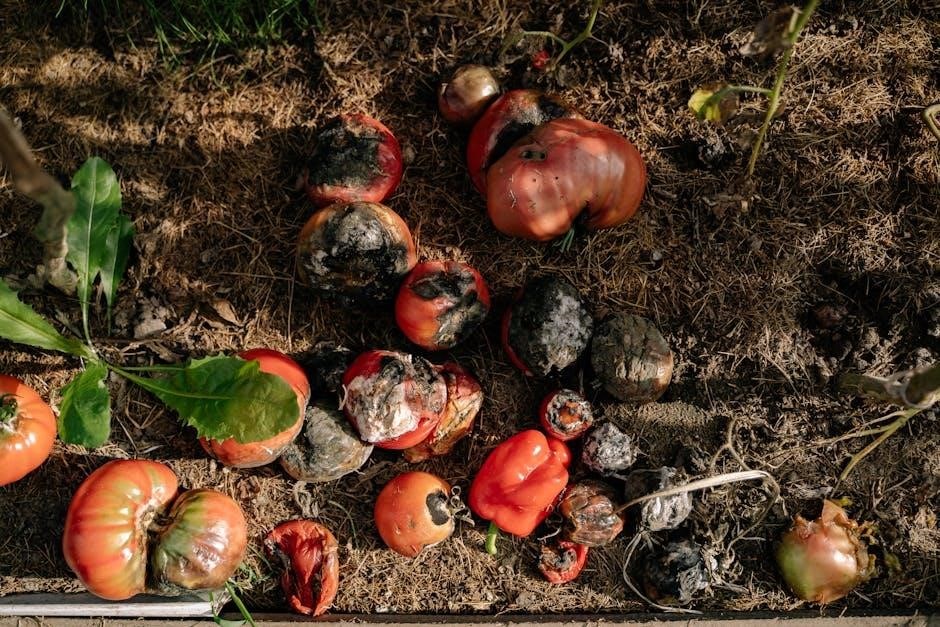Permaculture is a holistic design system blending farming with healthy ecosystems to create sustainable living solutions‚ as outlined in Bill Mollison’s seminal manual․

Definition and Overview
Permaculture is a holistic design system that integrates agriculture‚ ecology‚ and society to create sustainable and self-sufficient environments․ It aims to work with nature‚ minimizing waste and maximizing efficiency by designing systems that mimic natural ecosystems․ This approach emphasizes the importance of biodiversity‚ conservation‚ and the ethical use of resources․ Permaculture is not just about farming; it encompasses housing‚ energy‚ and community building‚ providing a comprehensive framework for sustainable living․ Bill Mollison’s Permaculture: A Designers Manual is a foundational text that outlines these principles‚ offering practical strategies for creating regenerative systems․ By focusing on long-term sustainability‚ permaculture seeks to harmonize human needs with environmental health‚ making it a powerful tool for addressing global challenges․ Its versatility allows it to be applied in urban‚ rural‚ and suburban settings‚ making it accessible to everyone․
History and Evolution
Permaculture emerged in the 1970s as a response to environmental degradation and resource depletion‚ spearheaded by Bill Mollison and David Holmgren․ Their work laid the foundation for a global movement․ Mollison’s Permaculture: A Designers Manual‚ first published in 1988‚ became the cornerstone of permaculture education․ Over time‚ the concept expanded from its agricultural roots to encompass urban design‚ community building‚ and sustainable living․ Today‚ permaculture is practiced worldwide‚ adapting to diverse climates and cultures while remaining true to its core ethical principles․ Its evolution reflects a growing recognition of the need for regenerative systems that harmonize human activity with natural ecosystems․ This movement continues to inspire innovation‚ offering practical solutions to contemporary environmental challenges․

Core Principles of Permaculture
Permaculture’s core principles‚ as outlined in Bill Mollison’s Permaculture: A Designers Manual‚ emphasize working with nature‚ viewing problems as solutions‚ and making minimal changes for maximum positive impact․
Work with Nature Rather Than Against
Permaculture’s foundational principle emphasizes harmonizing human systems with natural ecosystems․ By observing and mimicking nature‚ designers create regenerative environments that minimize environmental impact while maximizing productivity․ This approach encourages biodiversity‚ efficient water use‚ and soil conservation‚ fostering resilient ecosystems that require less maintenance over time․
Practical applications include planting polycultures‚ using rainwater harvesting systems‚ and integrating animals into landscapes to replicate natural processes․ This principle ensures that human needs are met without degrading the environment‚ promoting long-term sustainability and ecological balance․ It reflects Bill Mollison’s vision of designing systems that work in harmony with nature‚ as detailed in his seminal manual․

The Problem is the Solution
This permaculture principle‚ inspired by Bill Mollison’s manual‚ highlights turning challenges into opportunities․ It encourages designers to view problems as resources rather than obstacles․ For example‚ weeds can serve as mulch or erosion control‚ while excess water can irrigate crops․ By rethinking challenges‚ permaculture systems become more efficient and sustainable․ This approach fosters creativity and resourcefulness‚ ensuring that every element in a design has multiple functions․ It promotes a mindset of abundance‚ where “waste” is minimized‚ and every problem contributes to a solution․ This principle is central to permaculture’s goal of creating regenerative‚ self-sustaining ecosystems that benefit both humans and the environment․ It underscores the importance of observing and interacting with nature to find innovative solutions․
Make the Least Change for the Greatest Effect
This principle emphasizes minimizing interventions while maximizing benefits‚ ensuring sustainable and efficient designs․ By working with nature‚ permaculture systems avoid unnecessary alterations‚ preserving existing resources․ For instance‚ using natural contours for water harvesting or repurposing materials reduces labor and environmental impact․ This approach prioritizes simplicity and long-term productivity‚ aligning with permaculture’s ethical goals․ Observing and understanding the site’s conditions allows designers to implement subtle changes that yield significant results‚ fostering resilience and biodiversity․ This method ensures that designs are both practical and environmentally harmonious‚ reflecting permaculture’s commitment to sustainable living and resource stewardship․ By making minimal changes‚ permaculture systems achieve lasting effects‚ proving that less can often be more effective․ This principle is a cornerstone of permaculture design‚ as outlined in Bill Mollison’s manual․

Design Process and Strategies

Permaculture design involves observing natural patterns‚ planning layouts‚ and implementing sustainable techniques to create efficient‚ self-sufficient systems‚ as detailed in Bill Mollison’s manual․
Step-by-Step Guide to Creating a Permaculture System
Creating a permaculture system begins with assessing the site’s conditions‚ such as soil‚ climate‚ and slope․ Design the layout by zoning areas for different uses‚ prioritizing efficiency and biodiversity․
Implement elements like guilds‚ polycultures‚ and water harvesting systems to enhance productivity․ Mulching‚ composting‚ and agroforestry practices are essential for soil health and ecosystem balance․
Regular maintenance involves monitoring‚ pruning‚ and adapting strategies to ensure sustainability․ Over time‚ the system evolves‚ requiring minimal external inputs and maximizing natural resources․
This approach‚ detailed in Bill Mollison’s manual‚ ensures a self-sufficient and regenerative environment‚ aligning human needs with nature․

Practical Applications and Techniques
Practical permaculture techniques include mulching to retain soil moisture‚ composting to enrich soil fertility‚ and agroforestry to integrate trees with crops․ Water harvesting systems‚ like swales and ponds‚ efficiently manage rainfall․
Polycultures and guilds promote biodiversity by growing multiple plants together‚ enhancing productivity and pest resistance․ Animal integration‚ such as chickens for pest control‚ adds functionality to the ecosystem․
Keyline design optimizes water distribution across landscapes‚ while companion planting improves plant health․ These methods‚ outlined in Bill Mollison’s manual‚ create regenerative systems that minimize waste and maximize resources‚ fostering sustainable living and environmental balance․

Ethical Considerations

Permaculture ethics emphasize caring for the Earth‚ ensuring fair resource distribution‚ and promoting sustainable living to harmonize human needs with nature․
Sustainable Living and Environmental Stewardship
Sustainable living‚ a cornerstone of permaculture‚ focuses on harmonizing human needs with natural ecosystems․ By adopting practices that minimize waste and maximize resource efficiency‚ individuals can significantly reduce their ecological footprint․ Environmental stewardship is achieved through conscious design and management of land‚ ensuring biodiversity and soil health․ This approach not only preserves natural resources for future generations but also fosters a deeper connection between people and the environment․ The principles outlined in Bill Mollison’s Permaculture: A Designers Manual provide practical guidance on creating self-sustaining systems that benefit both humans and the planet․ By integrating these ethics into daily life‚ communities can move towards a more regenerative and resilient way of living․

Resources and Further Reading
Bill Mollison’s Permaculture: A Designers Manual is the definitive guide․ Additional resources include the Permaculture Design Course Handbook and online tools for practical applications and further study․
Bill Mollison’s “Permaculture: A Designers Manual”
First published in 1988‚ Permaculture: A Designers Manual by Bill Mollison is the definitive guide to permaculture design and practice․ This comprehensive textbook outlines the philosophy‚ ethics‚ and practical applications of permaculture‚ blending farming with healthy ecosystems to create sustainable living solutions․ Often referred to as the “Big Black Book‚” it covers design principles‚ strategies‚ and techniques for creating harmonious and self-sustaining systems․ The manual serves as the curriculum for the 72-hour Permaculture Design Certificate course and remains a cornerstone of permaculture education worldwide․ Its detailed insights have proven invaluable for practitioners across various climates and regions․ Updated resources‚ such as multimedia handbooks‚ complement the original work‚ ensuring its relevance in modern sustainable practices․
